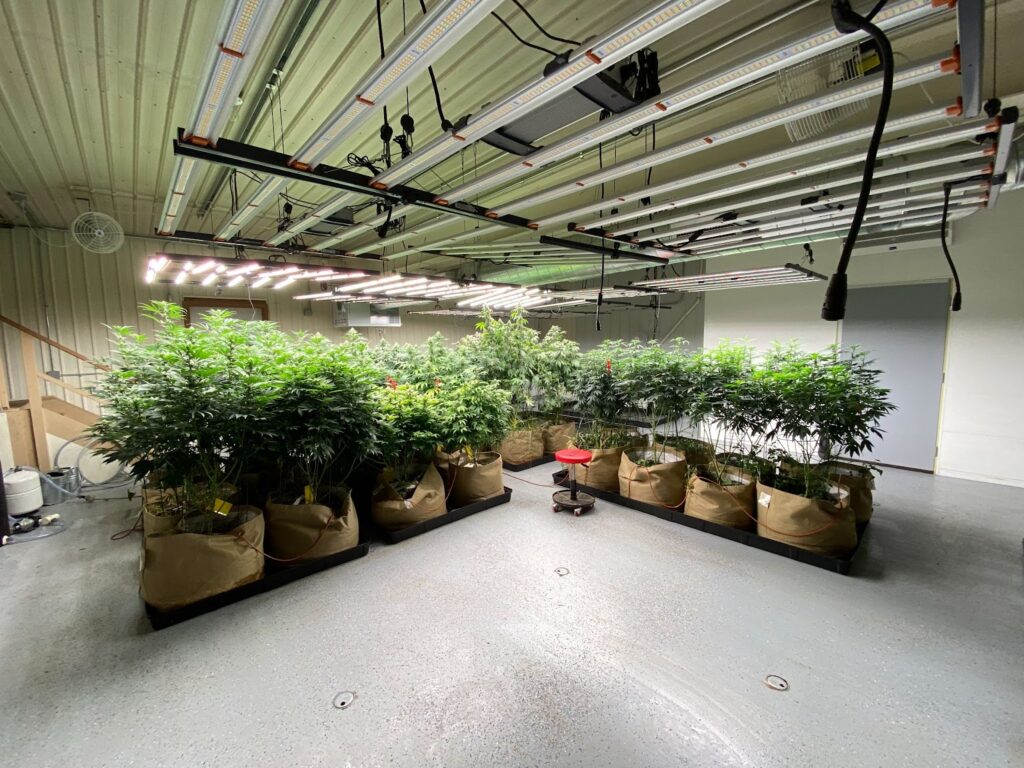This article will teach you how to make hash rosin from bubble hash (aka Ice water hash). Hash rosin is the cream of the crop when it comes to cannabis extracts. It is made via a completely solventless process (using only ice water, agitation, pressure and heat). The result is a delicious, easy to dab badder of THC-A, cannabinoids, flavonoids and terpenes with all the plant matter removed. The process of making hash rosin from bubble hash comes down to squishing the oils out of the trichome heads while leaving the waxy shells behind.
Hash rosin can be used as a baseline for making a full catalogue of cannabis products including rosin carts, full spec edibles, topicals and a plethora of different consistencies of dabbable product including jam, diamonds, crumble and THC-A.
Making hash rosin can be done at home with minimal tools, or in a licensed facility using sanitary practices. The main requirement is a press with heated plates and 25 micron mesh bags.
If you’ve made flower rosin before it should be noted that hash rosin is a different tier of product. Hash rosin “butters up” unlike most flower rosin and is usually a much lighter colour. The best analogy for hash rosin vs flower rosin is the grape analogy. Think of trichome heads as grapes and rosin as grape juice. In that thought experiment flower rosin is analogous to taking full grape plants (branches and all) and pressing that to get grape juice. Hash rosin is more like harvesting the grapes and pressing just those. As the expression goes “if it made a good flower rosin, it would have made a better hash rosin”. Hashtek products are designed for making hash rosin and not flower rosin.
If you’re coming from making flower rosin you may suffer from blowouts as you get used to the nuances of pressing hash rosin. The pressing technique for hash rosin is different from flower rosin but if you follow the steps below you will never have a blowout, I can almost guarantee it!
Note that this is part 2 of a 2 part tek, I recommend reading the bubble hash tek before you proceed
How to Press Hash Rosin
Items Required:
- Bubble Hash
- Rosin Press
- Budget/Home use: Dab Press
- Commercial/Production: Sasquash V2, Sasquash Yeti 10-ton and 55-ton
- Fine Mesh Stainless Steel Strainer
- Spoon
- 25μ rosin bags (inner bag)
- 160μ rosin bags (outer bag)
- Parchment paper (I prefer Kirkland or Supreme Rosin paper)
- Scraping tool
- Straight Sided Glass Jar (U-line jars are best)
- Nitrile Gloves
Step 1: Sift the Bubble Hash

Most producers I know sift their freeze dried hash prior to sifting. This helps the hash fill the bags more evenly and can help prevent blowouts. Do not bother trying to sift air dried bubble hash, it will be too sticky. If you are working with air dried material use your fingers to make an elongated bar that you can freeze and insert into the bag.
If your hash room is not sufficiently cold the bubble hash will clump together as you try and sift it. If this is the case you may need to forgo sifting the hash. It as mentioned above it can be molded into bars and then frozen and slipped into the bags. You don’t get as even distribution (and presumably slightly lower press yields) but it is much better than trying to sift hash in a warm environment.
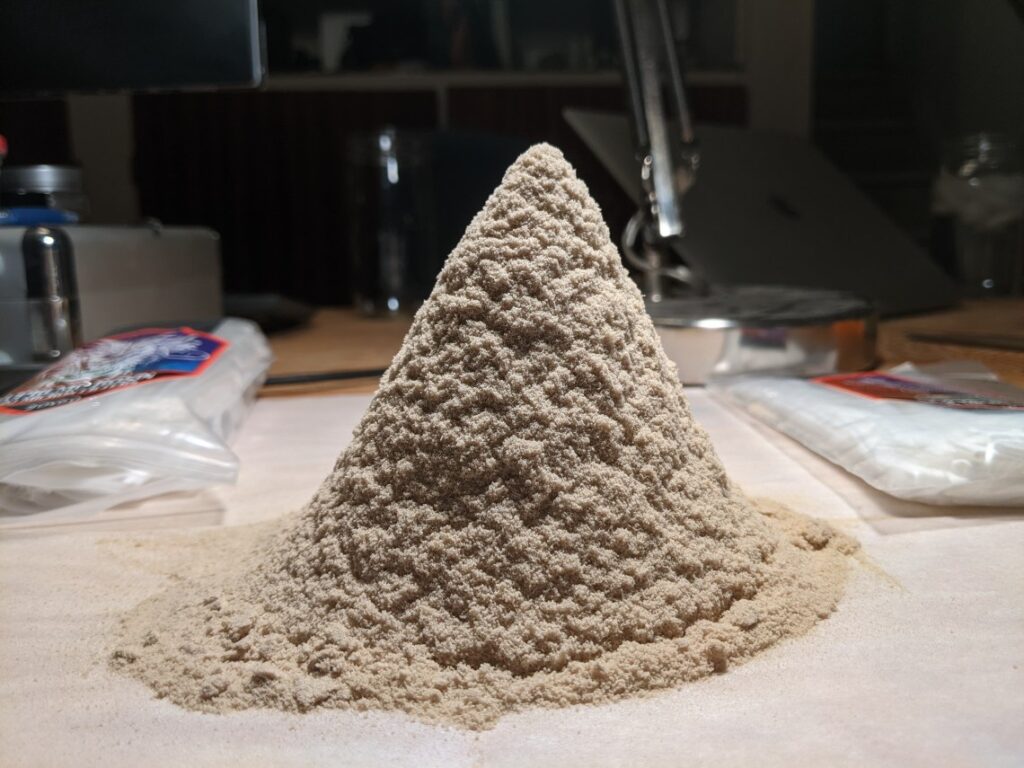
Step 2: Fill the 25-micron Bag
Fill the 25 micron bags with 10-18 grams of bubble hash per bag. I have gone up to 25 grams for a 3×5 press but it can decrease yield and increases the risk of blowouts. Trim the tag end of the bag so there is approx. 1.5″ length for the fold-over. If working with high terpene/sticky material it helps to be in a cold room when filling the bags.
If using a larger press you may want to still press multiple small bags on a larger plate (vs using larger bags). If you are having blowouts with large bags try this. It can be challenging to get even distribution in a large bag.
My favourite bags are made by supreme rosin. For a 3×5 press I like 2×4.5 or trimmed down 2×6 bags.
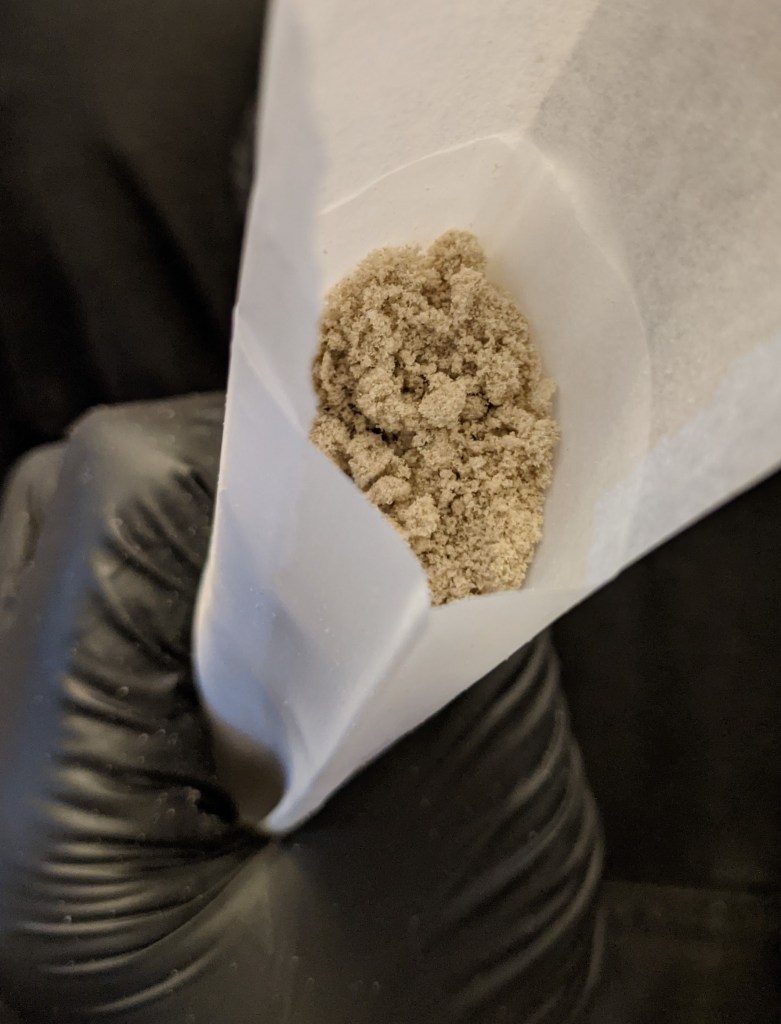
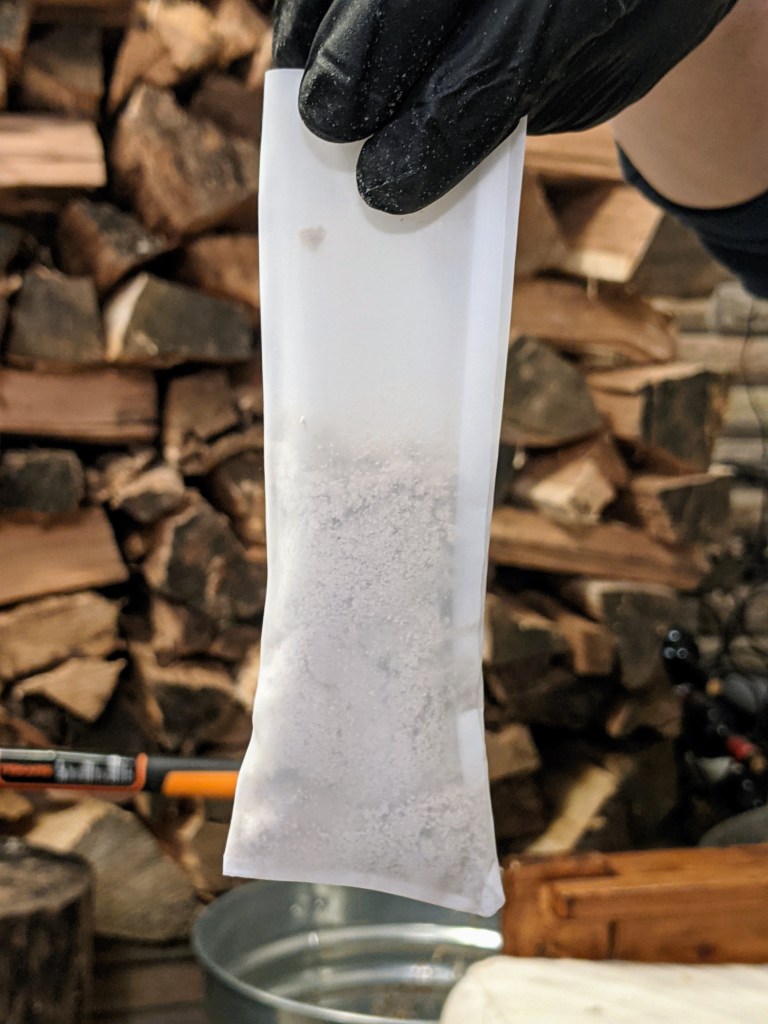
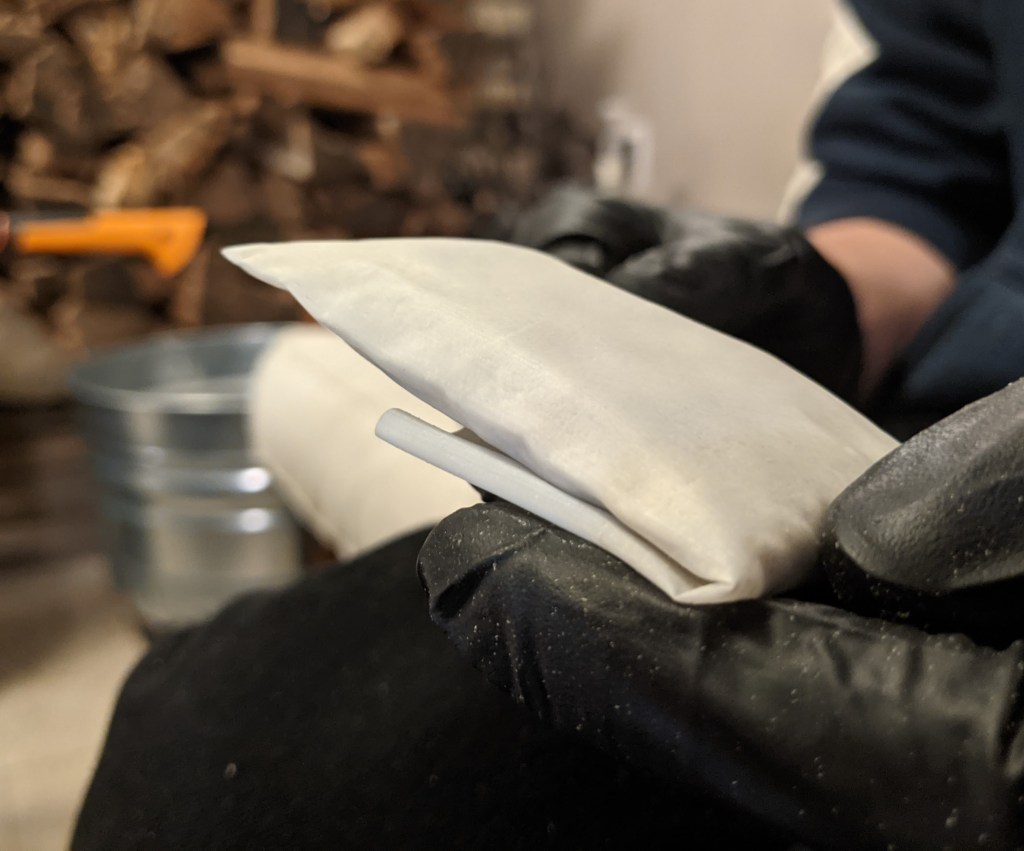
Ensure that the hash is evenly distributed within the bag. This will help improve press yields.
Step 3: Double bag the hash with the 160-micron bag

Double bagging your bubble hash is a key step in preventing blowouts. Place the 25-micron bagged bubble hash into the 160-micron bag
Step 4: Pre Press the Bubble Hash
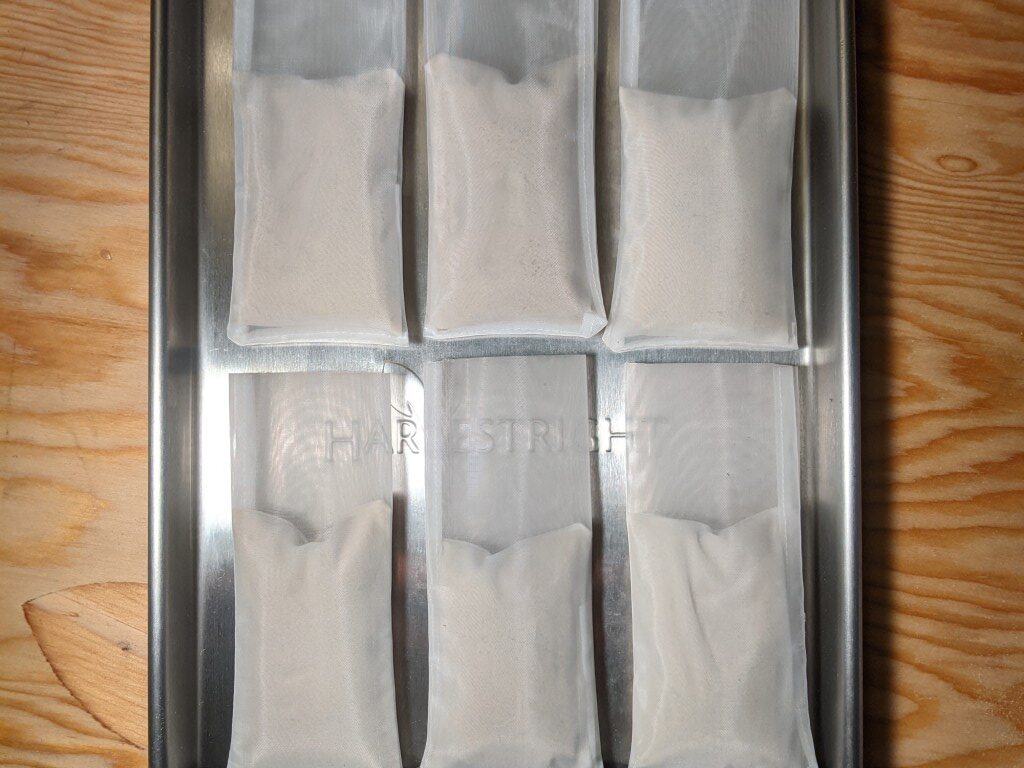
This is another step for preventing blowouts and increasing press yield. Pre-pressing also give you an idea of how much the bubble hash will yield. Material that looks more “greasy” (e.g. wet/oily) after the pre-press will almost always yield better on the press.
You can pre-press using your rosin press (NO HEAT) or you can do multiple pucks at a time in a vice grip as shown below. Pressure applied should be firm but not excessive enough to blow out the bags.

After the pre-press I like to leave the bags in a jar at room temperature for 2-6 hours before pressing. This allows the trichome heads to come down to room temperature and start to fuse together.
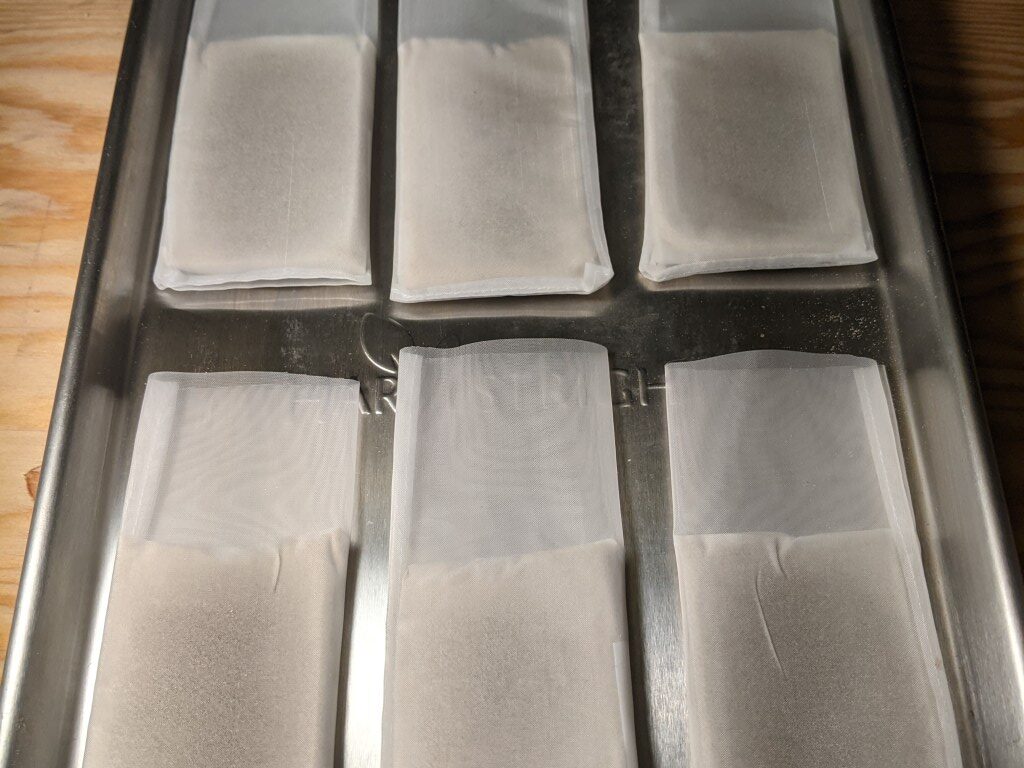
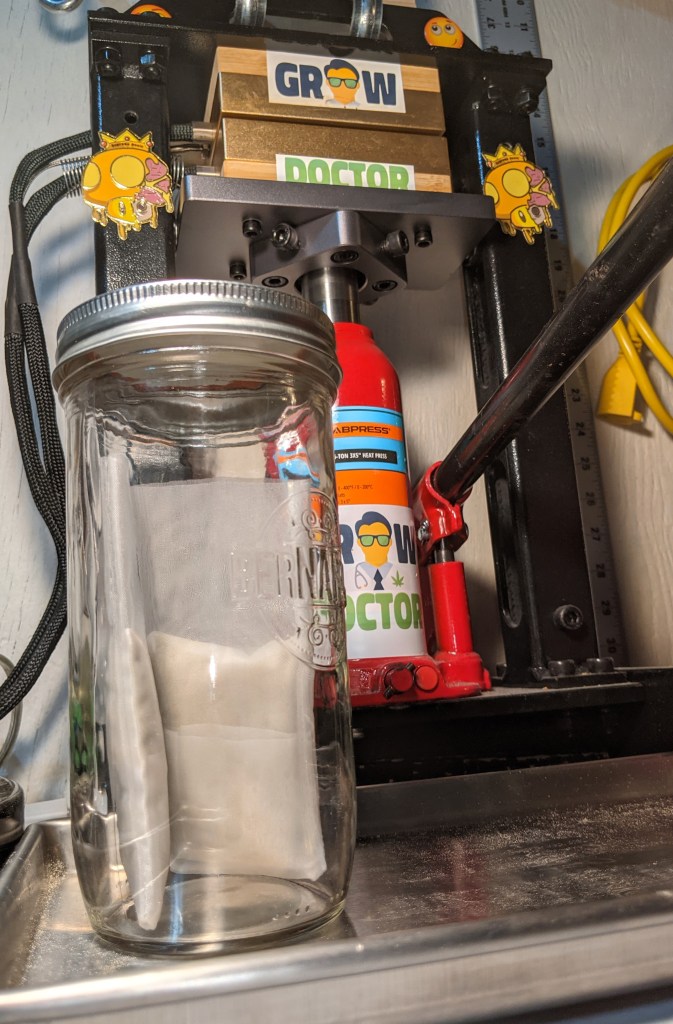
Step 5: How to Fold Parchment Paper for pressing hash rosin
Fold your parchment paper as shown below. Use a 7″ x 18″ piece of parchment paper for pressing 15g of rosin on a 3×5″ press.
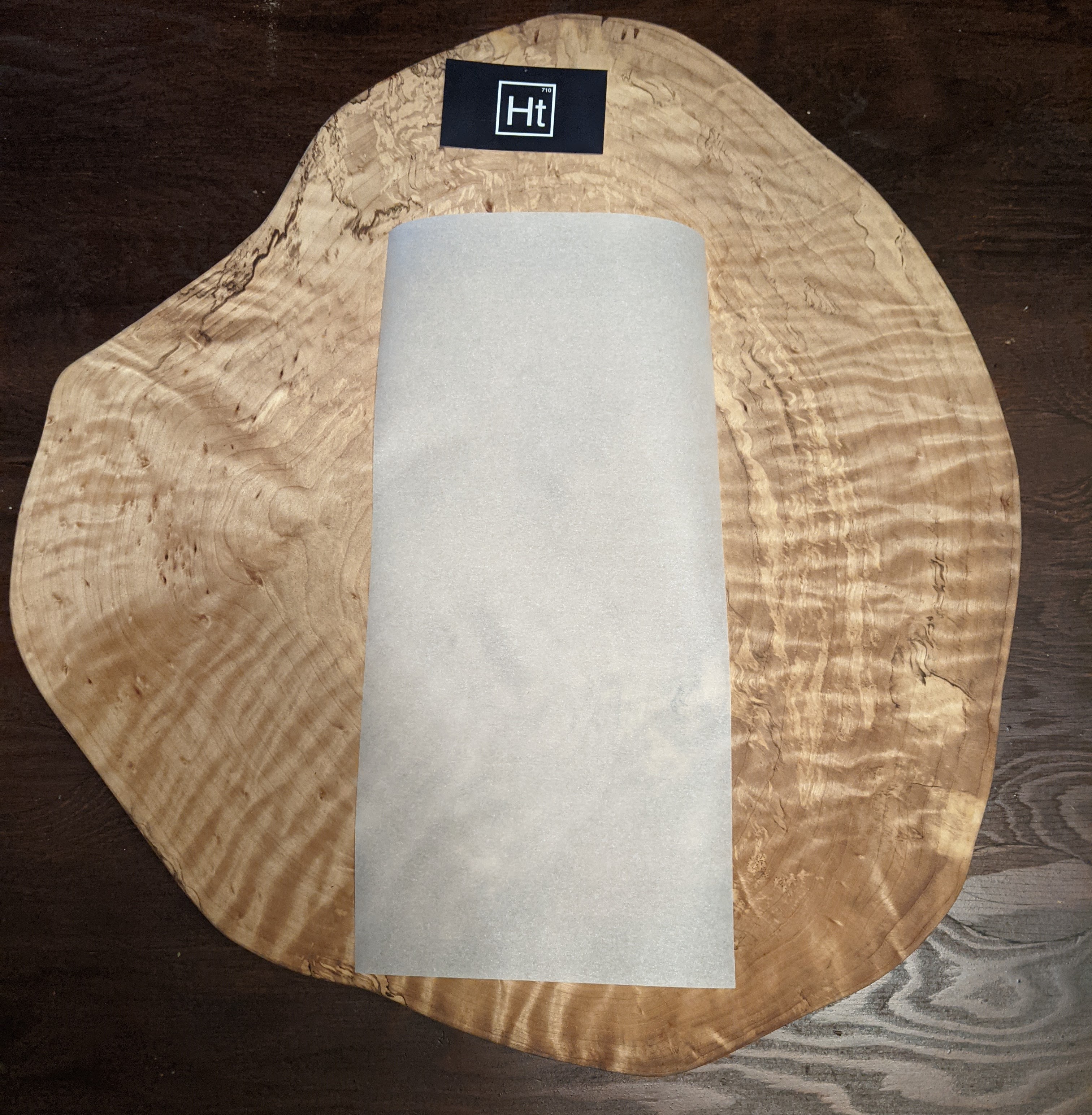
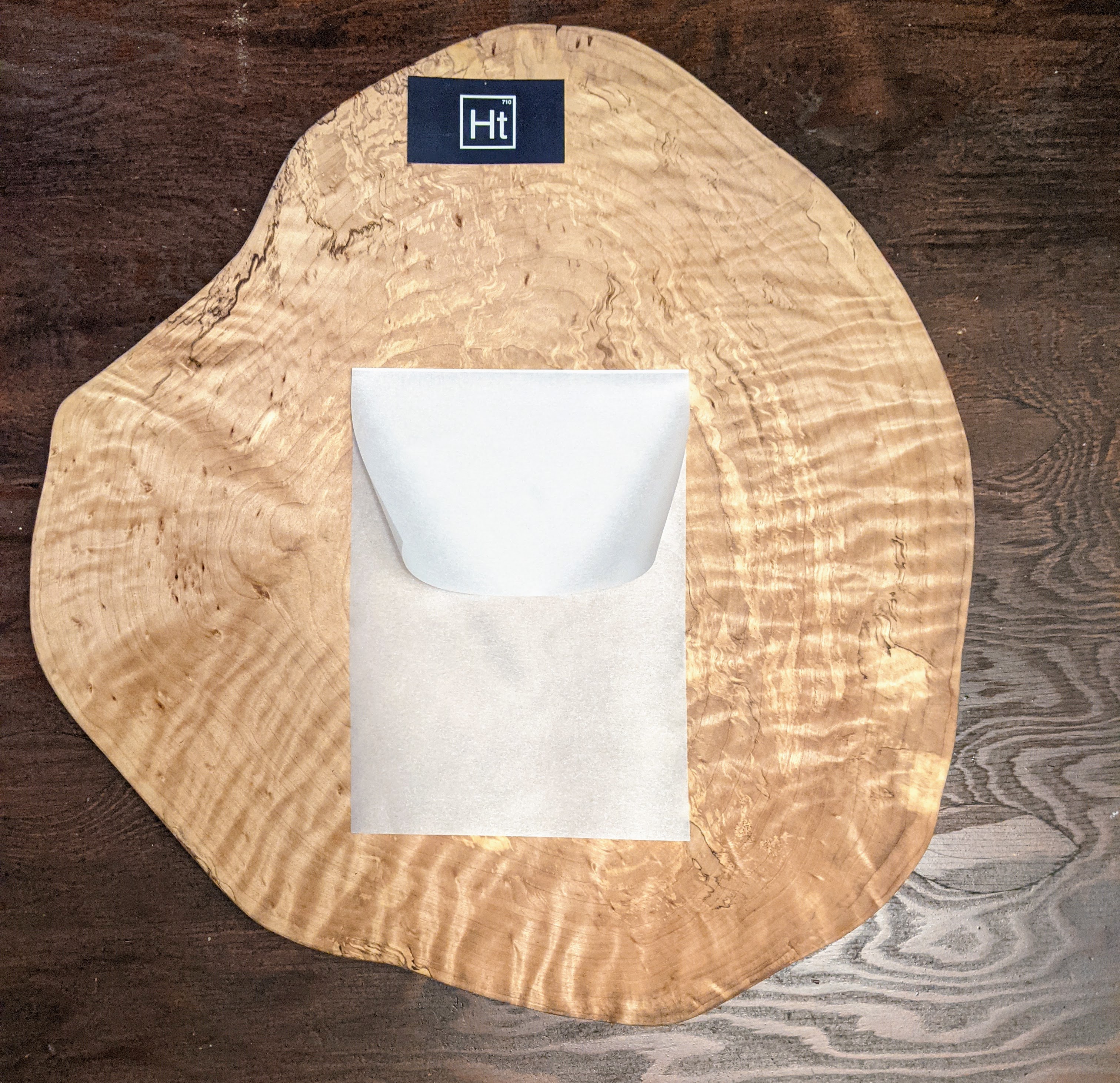
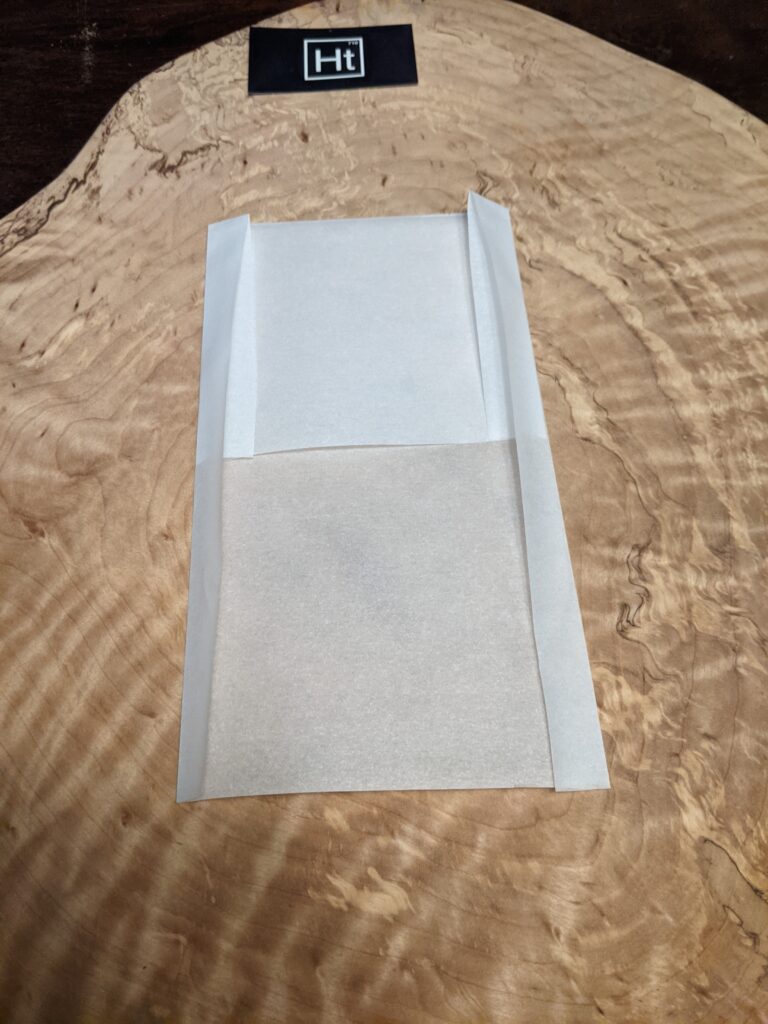
Although the photos below show multiple pucks being pressed on the same paper -this is not really the best way to do it- it just makes a great photo-op. Pressing one bag per parchment paper allows you to get it in the fridge quickly, and reduce oxygen exposure. This is critical to protecting the quality of the hash rosin. Remember that when the rosin is hot off the press it is the most susceptible to oxidation.
Step 6: Press the Hash Rosin
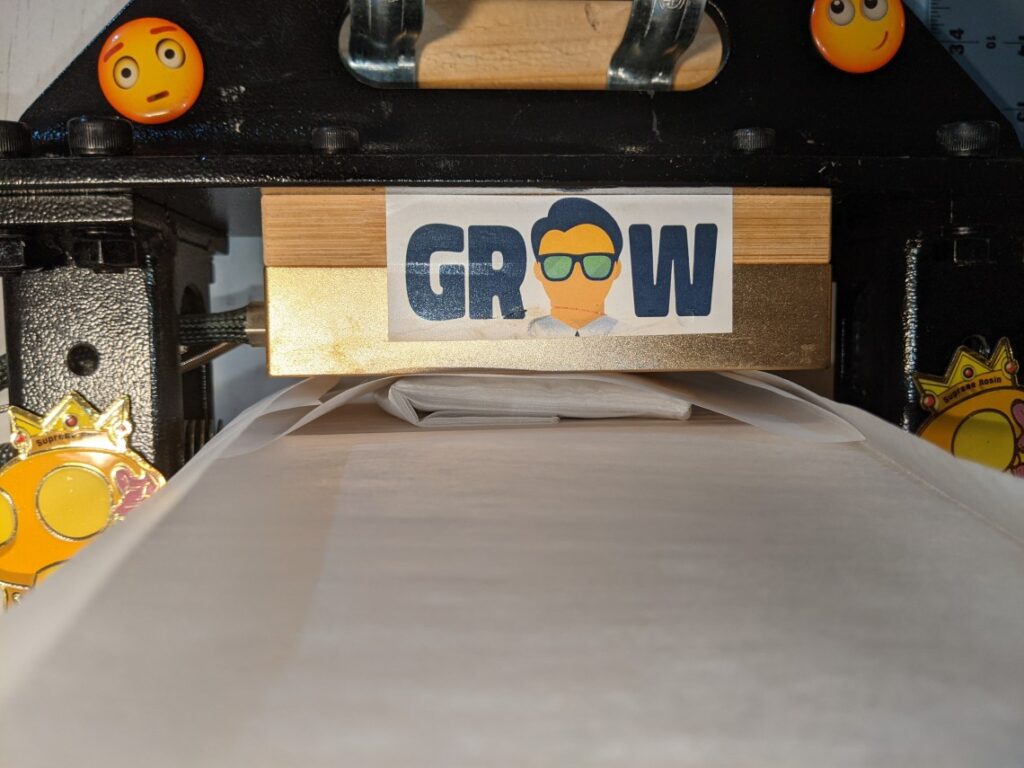
Heat up the press to 170F (76C). I press almost all of my hash at this temperature. For fresh frozen material you can get away with lower temps but I like the profile of fresh dried material more. The high mono terpene content in fresh frozen material I find tickles my nose/throat, I digress… fresh frozen vs fresh dried is a debate for another post.
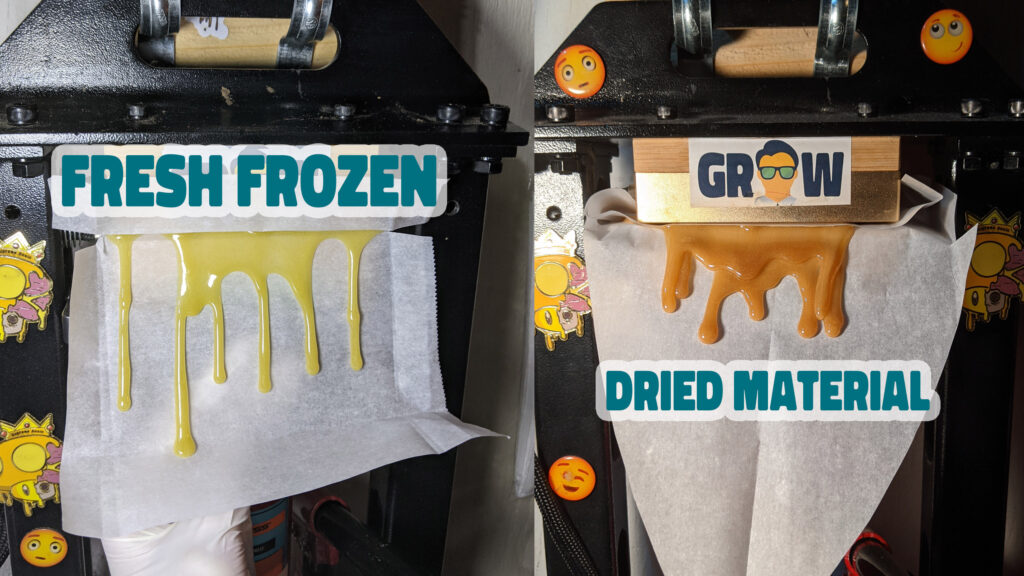
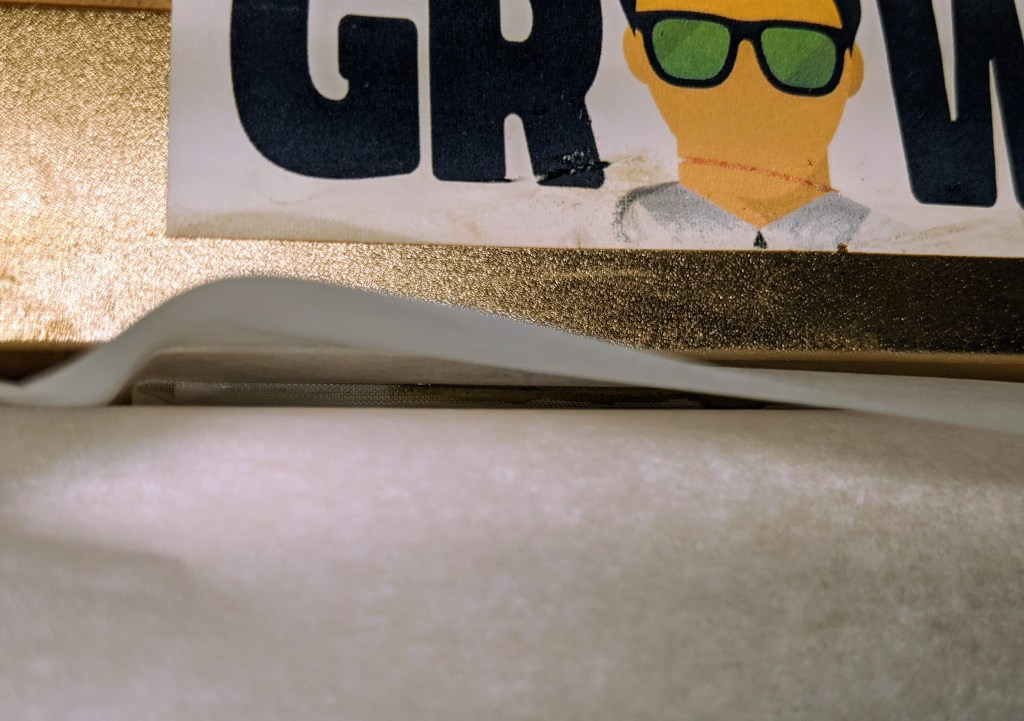
The key to pressing hash rosin without blowouts is to apply minimal pressure until the bag wets through entirely. It is hard to see as you need to squint between the plates but once the hash rosin starts too ooze you can gradually increase pressure towards max. I personally think a pressure gauge is not necessary, unless you are in a commercial production environment. I can yield 80%+ on the press with only a 6-ton bottle jack style 3×5 press. Average press yields are 65-80%.
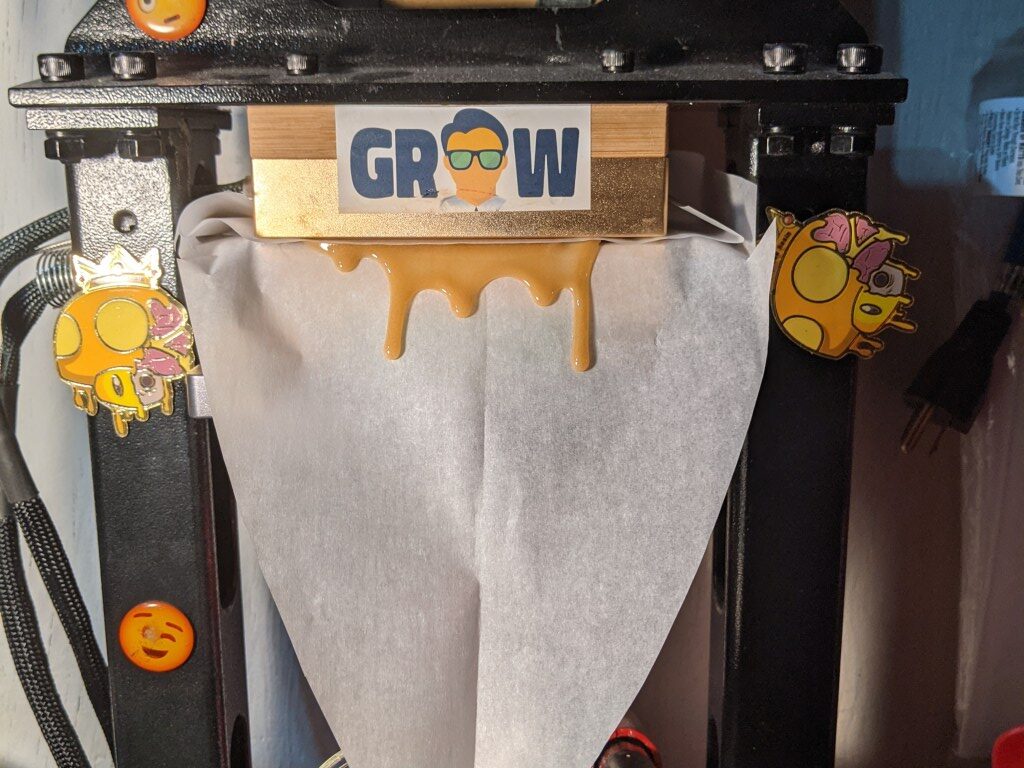
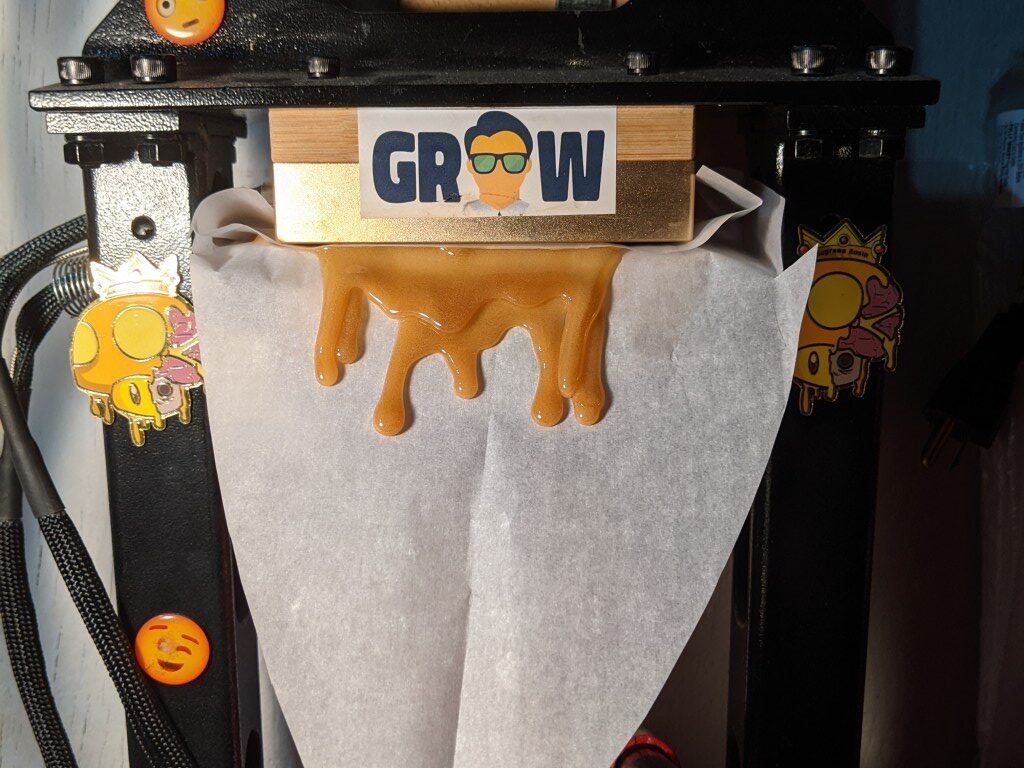
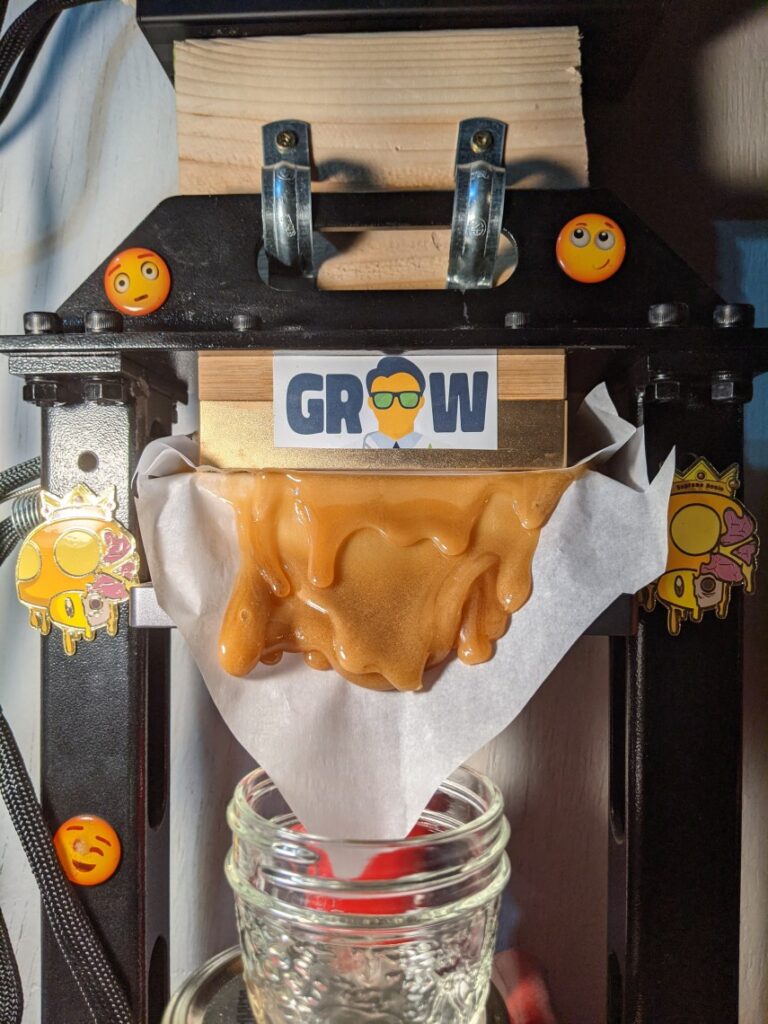
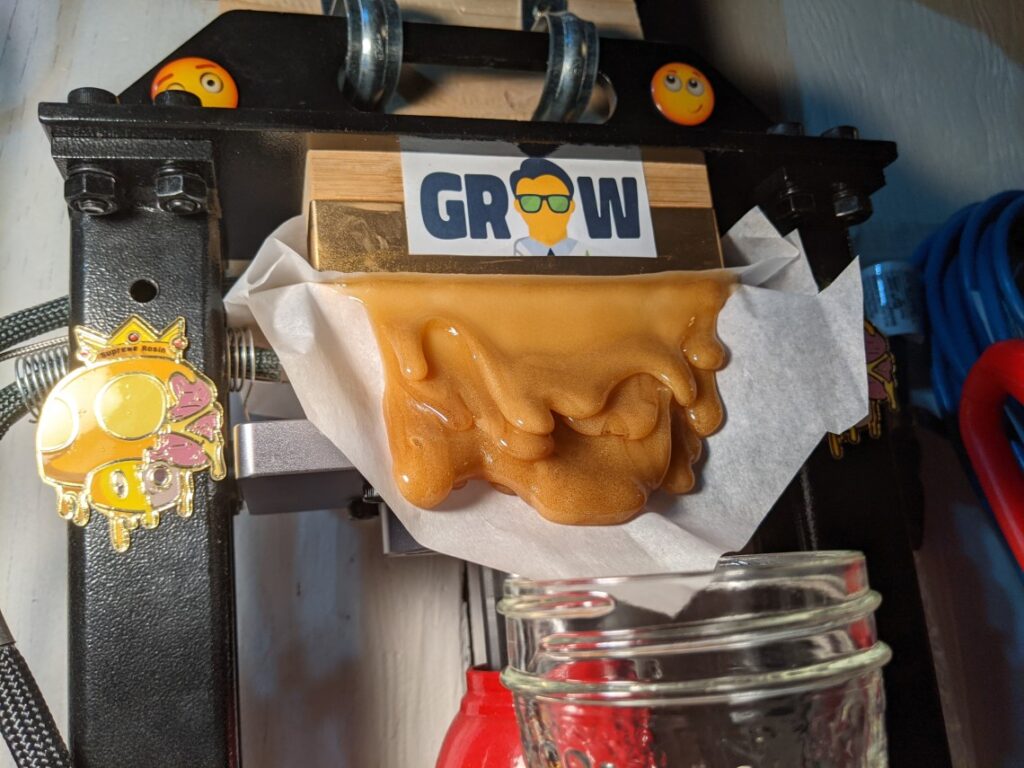
Inspect the pressed rosin puck. It should look hollow in the middle with all the remaning lipids pushed out to the edges of the bag.
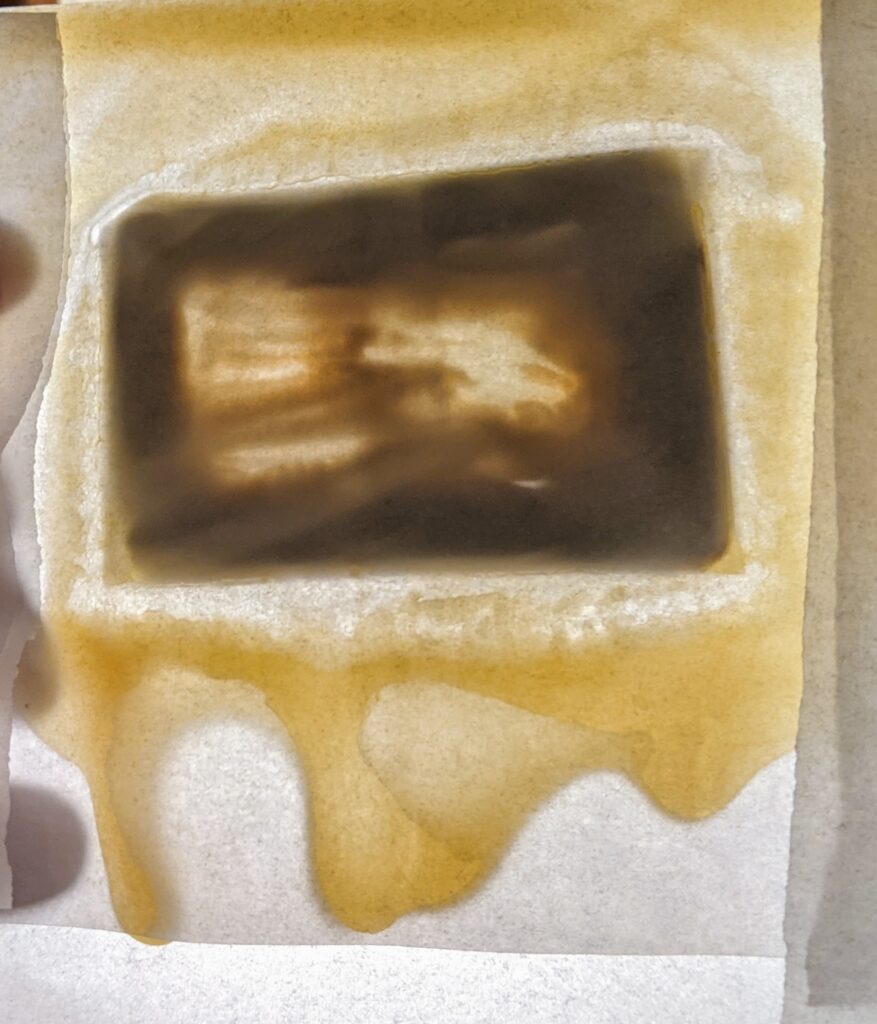
I usually freeze all of my pressed pucks. They can be used for edibles or terpenes can be pulled off of them if making vape carts.
Step 7: Cure the Hash Rosin
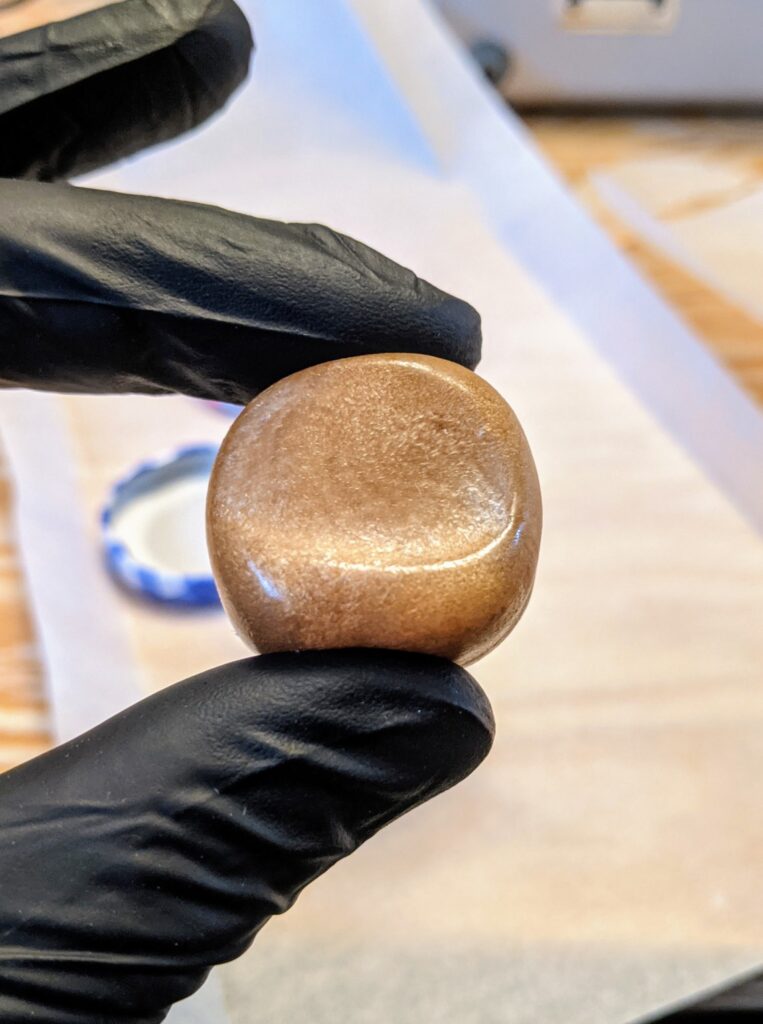

The final step is to put the hash rosin into a jar and allow it to “cure”. The cured product almost always tastes better than fresh press rosin. The complex molecular reactions that occur during the aging process are currently being investigated by the trichome research initiative started by the late Frenchy Cannoli. Rosin will typically go from a sticky/shatter product to an easy to handle butter/batter style product after the cure. Curing from fresh-press to shelf stable butter can take anywhere from 3 days to months. I have found cure temperature and terpene content to be the main determinants of cure time.
The glass jar should have a tight fitting metal lid with gasket, and should be appropriately sized to minimize head space. The jar should be straight sided to make removal easy. U-line makes the best jars jars for hash rosin hands down. They have a thick gasket that keeps your terpenes safe. Amazon has decent options available too, just make sure you have a very tight fitting seal. If the terpenes are allowed to escape your final product will be very one dimensional like a distillate.
The cure can be done at room temperature or in the fridge. I prefer to do the initial phase at room temperature and then do the post-homogenization shelf stabilization at fridge temps. The cure process for me typically looks like this:
- Jar the fresh press
- Cure at room temperature until THC-A finishes nucleation and terpenes seperate out (2-14 days)
- This is confirmed visually by marbling that becomes present
- Homogenize the rosin (stir with a dab tool)
- Cold cure/store in fridge from there
Note that step 2 can be done at fridge temperatures. I have found this really slows down the nucleation without adding too much to the final quality.
Hot Cure vs Cold Cure Rosin
In hot cure tek the initial nucleation of THC-A is accelerated by hot oven temperatures above 140F. I strongly recommend against hot curing your rosin. It only shaves 5-10 days off the process and really degrades the product. Look no further than this reddit post for a comparison of hot cure vs cold cure (albeit flower rosin, but still)

Taffy Tek (Fresh Press Homogenization)
Taffy Tek – is used to homogenize hash rosin. You can see my friend botanichemist performing ‘taffy tek’ on fresh pressed hash rosin in the video below. The advantage is that you can package the product in its final jar straight off the press (e.g. letting it butter up in portioned 1g jars). I typically avoid this method as I think it increases oxidation of the rosin (oxidation reactions are accelerated at warm temperatures). With my method you homogenize after the initial cold cure when the product is cold and more stable. I feel ‘taffy tek’ homogenization is more useful in a production environment where cure times need to be accelerated.
Hash Rosin Storage
Hash rosin should always be stored in the fridge post cure. Store in a glass jar with tight fitting metal lid. Silicone should never be used for extract storage as it leads to terpene loss.
Where’s My Bike Hash Rosin Cure:
Day 0:
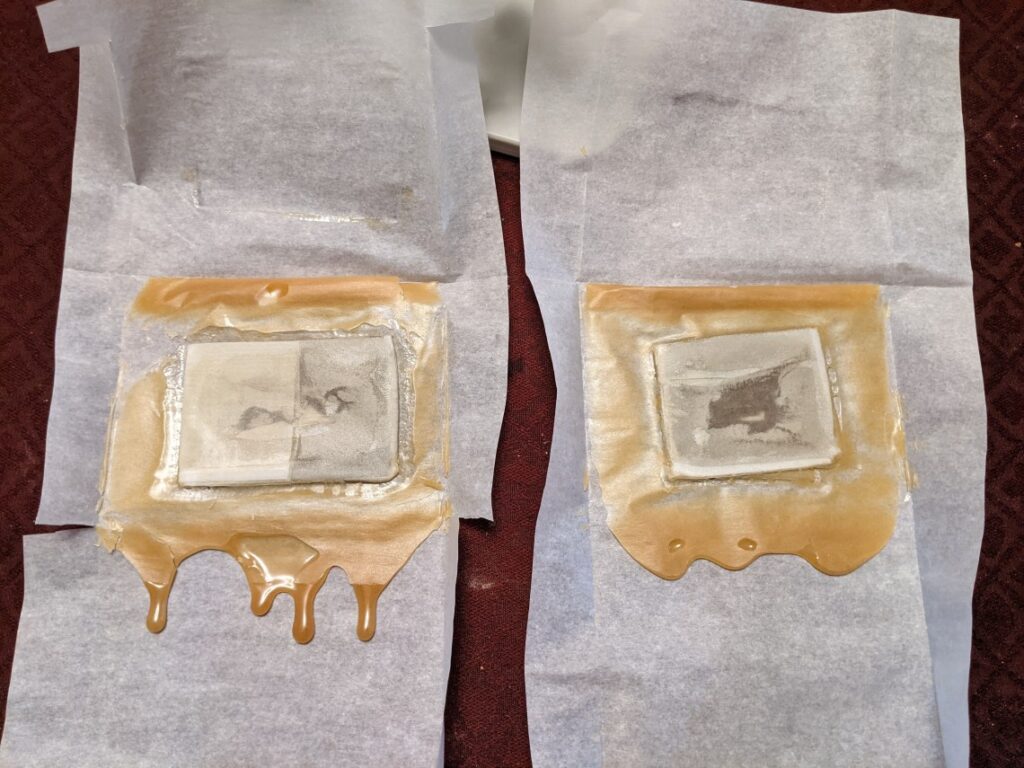

Day 2: Terpenes starting to separate out
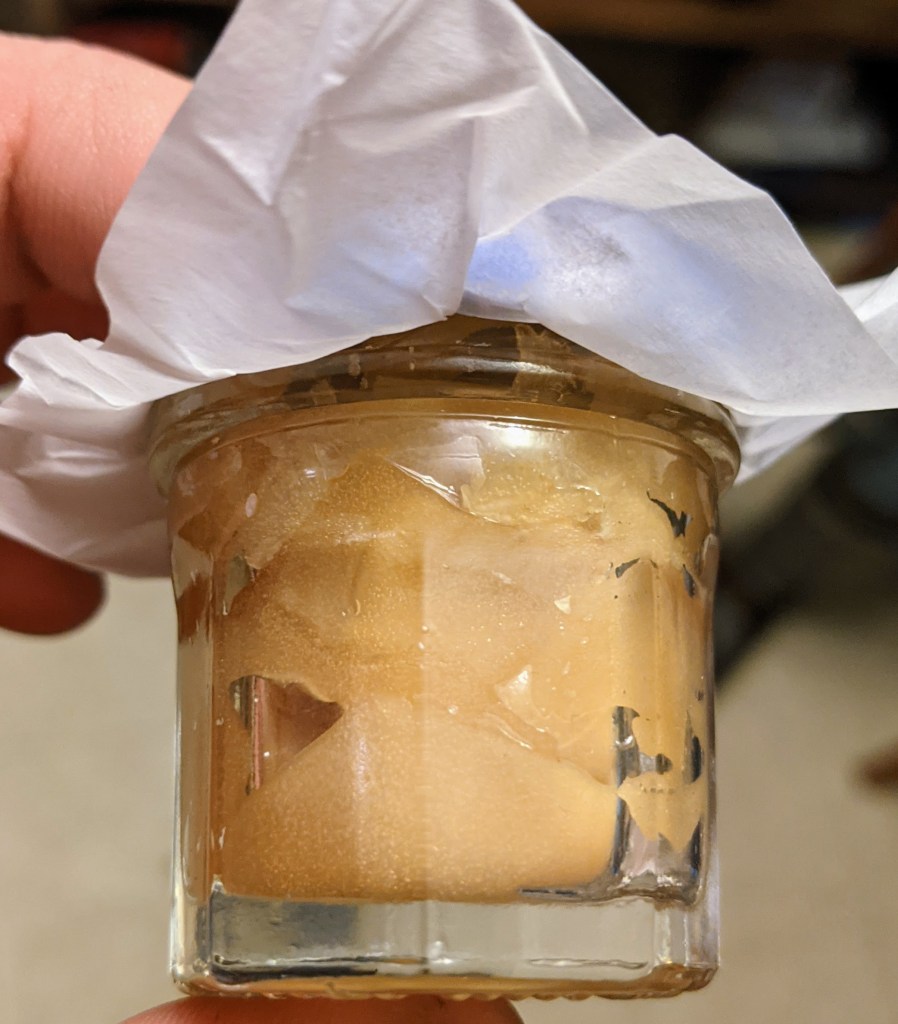
Day 4: Buttering process complete
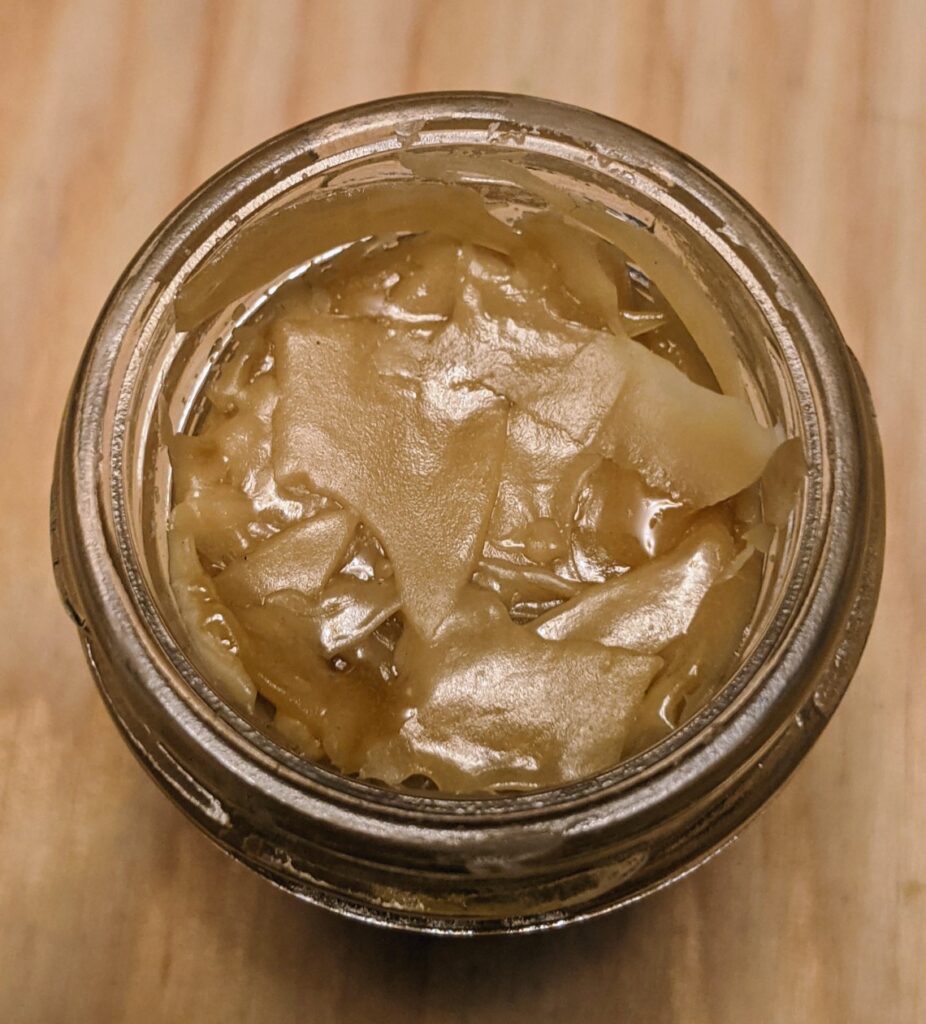
Day 4: Post agitation
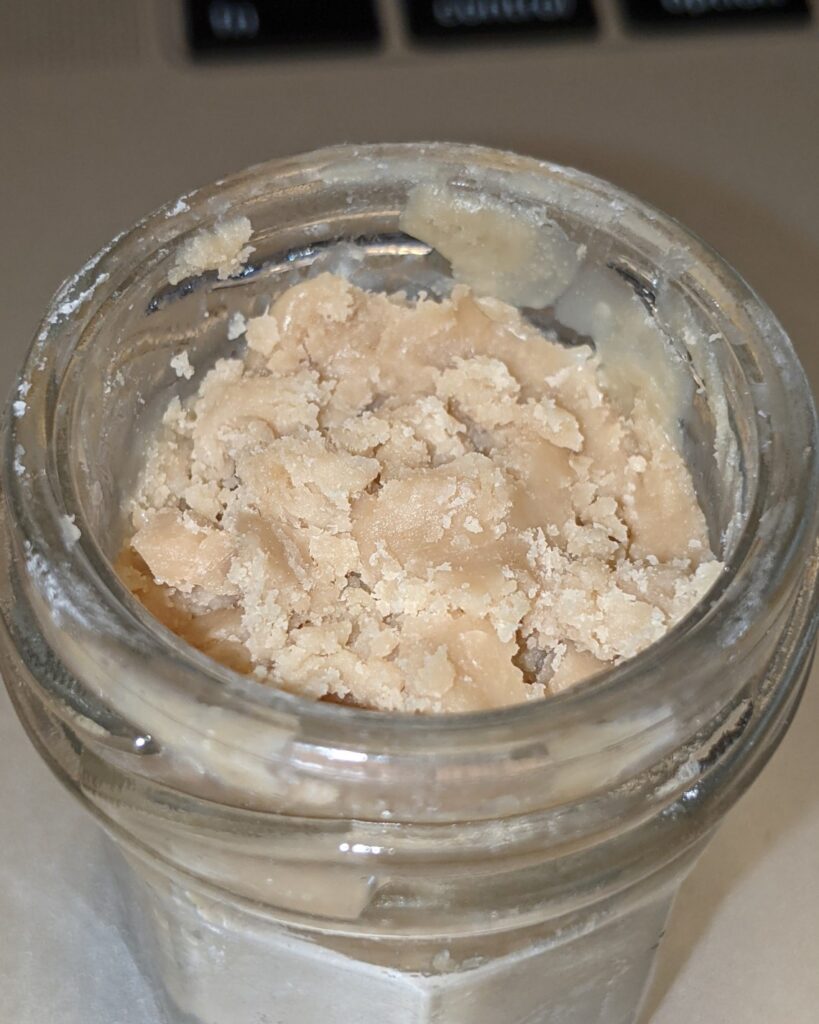
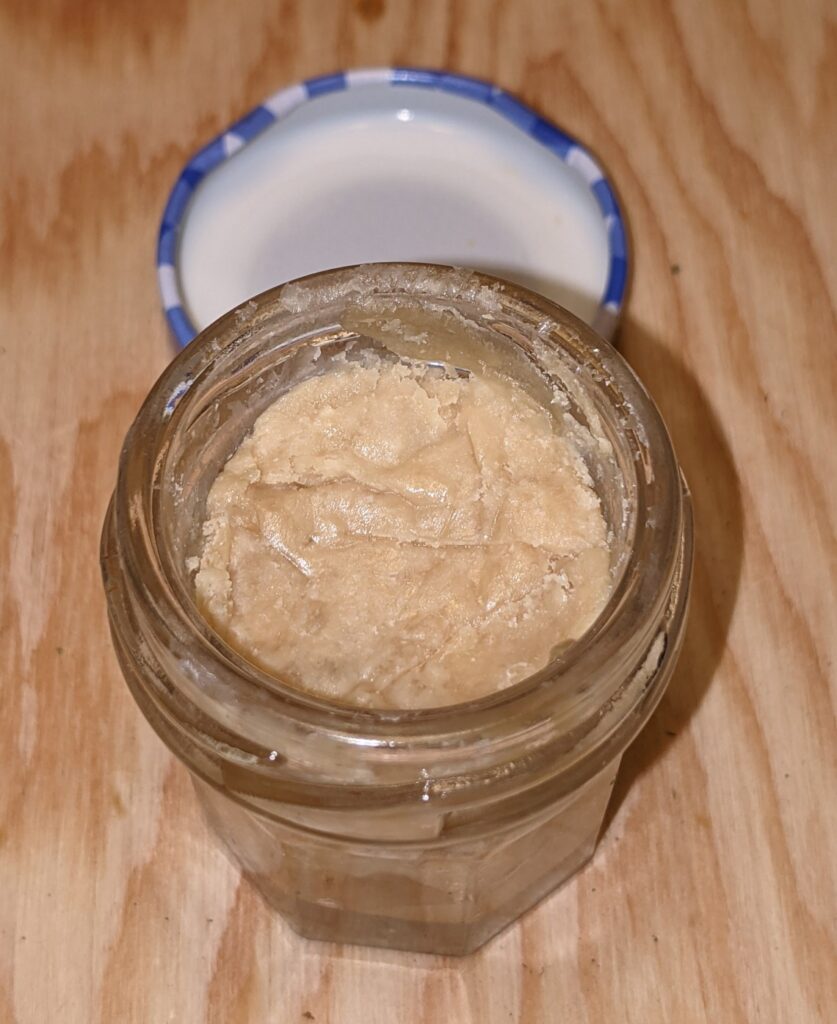
Day 10: fully cured shelf stable batter
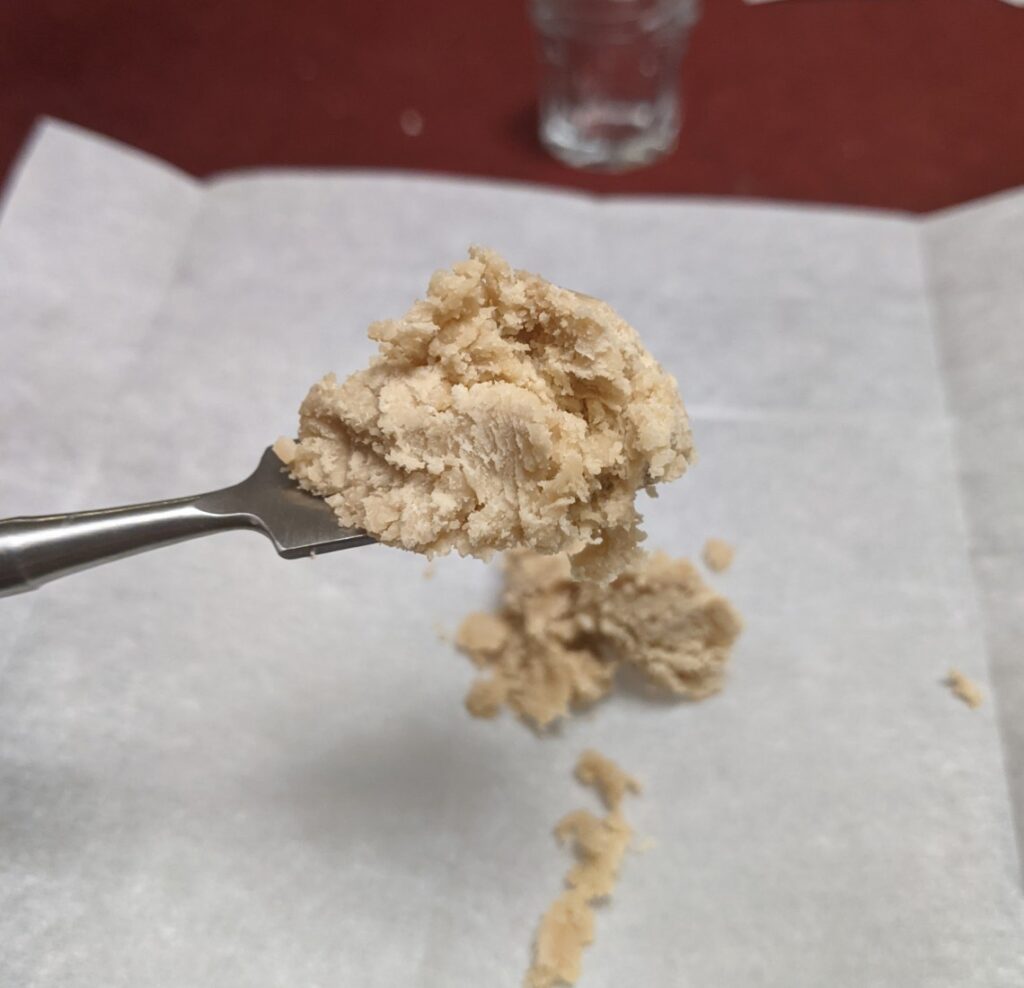
Dry Cured Guava Hash Rosin:
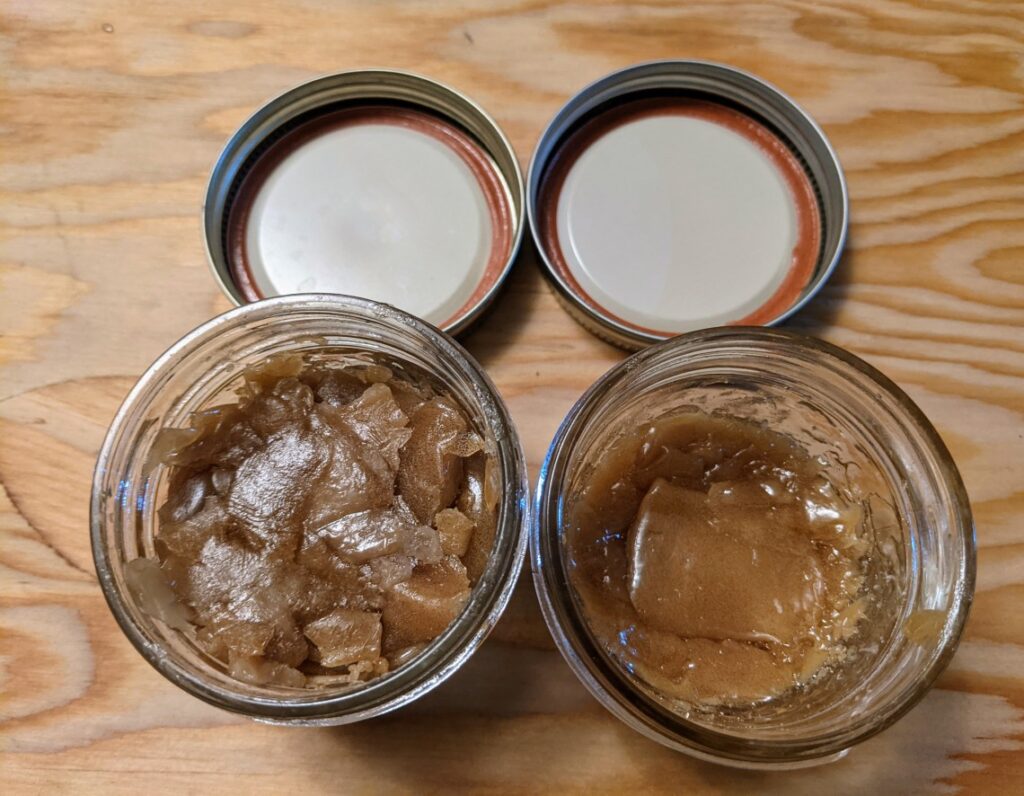
9 Day Separation: Terpene layer you could swim in
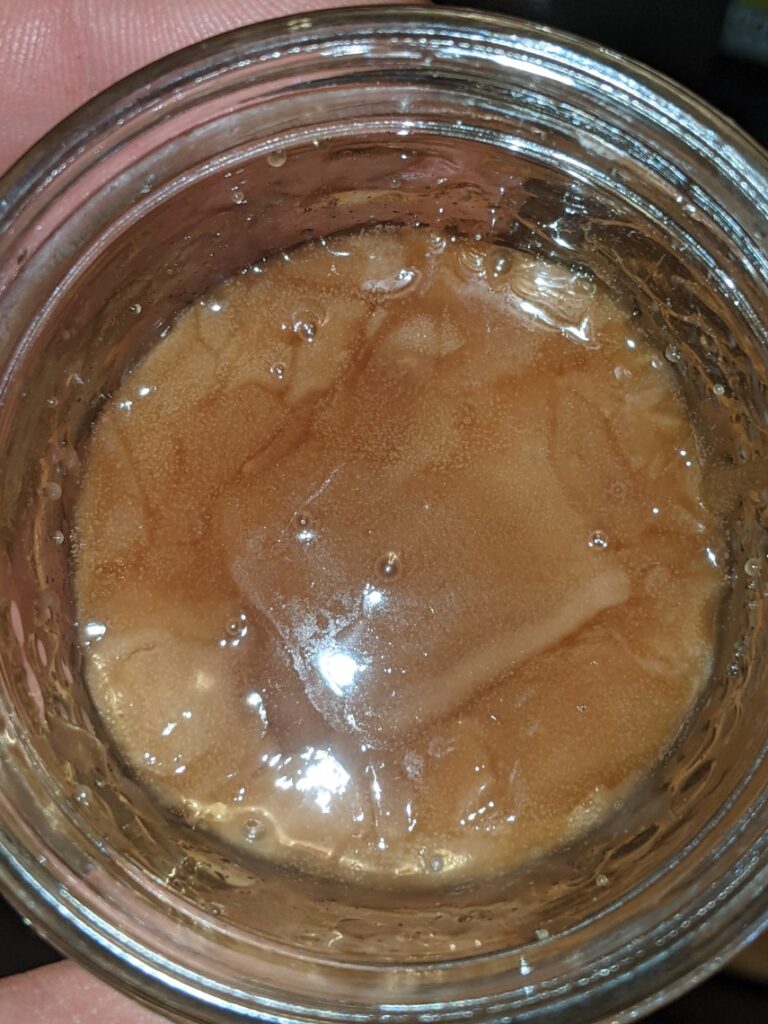
For what it’s worth this Guava is one my my favourite hash rosin’s profiles. Both in taste but mainly in effect. It is a fine substitute for smoking the gassy Pink Kush that I love. No combustion necessary when this stuff is around

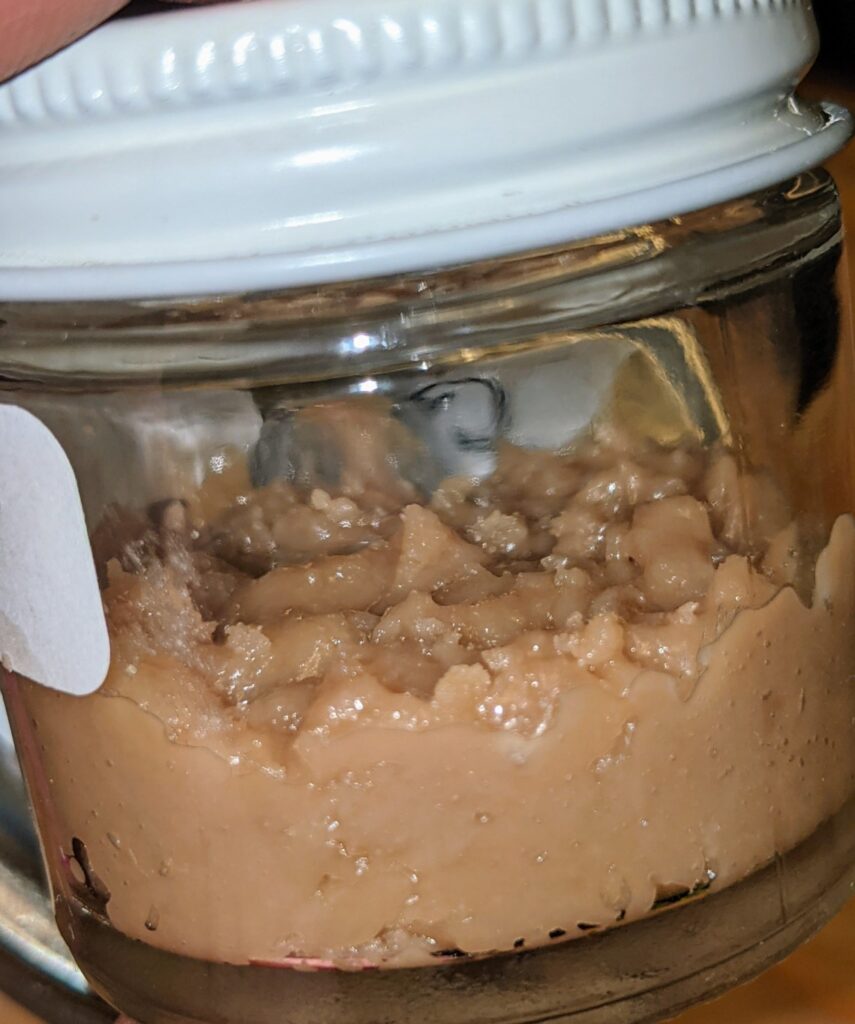
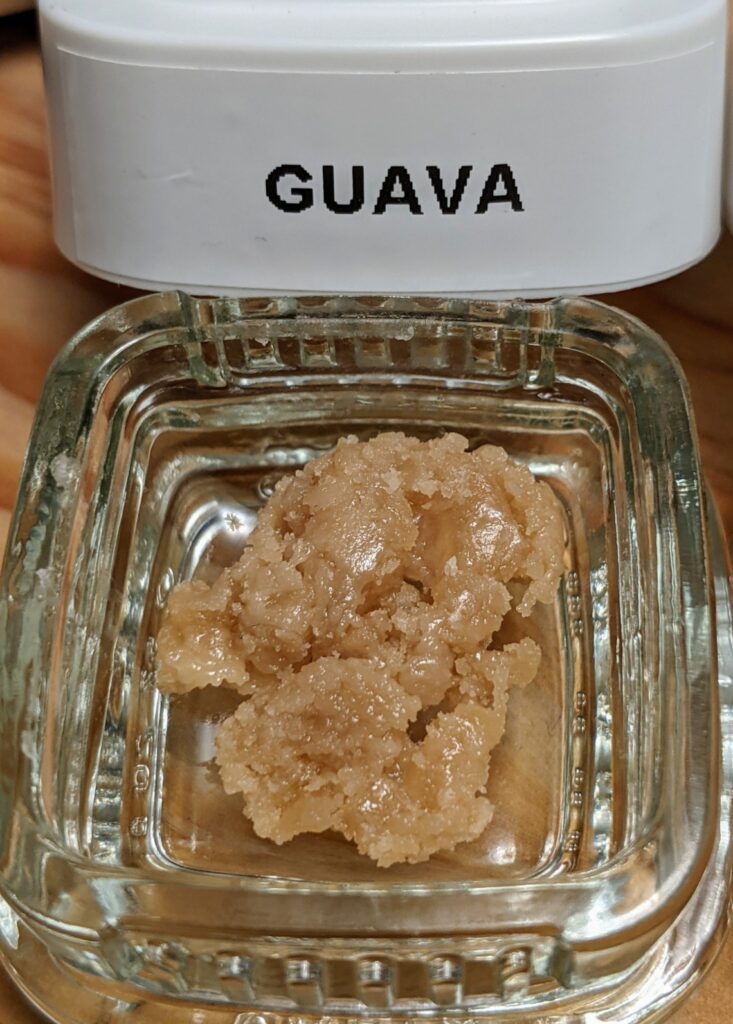
The jar shown above is a calyx jar. They are a good option for packaging, especially since they have reduced head space in the jar from 7mL to 4mL. I would love to see it reduced further to 1.5mL for the 1g format.
Happy hash making folks!









